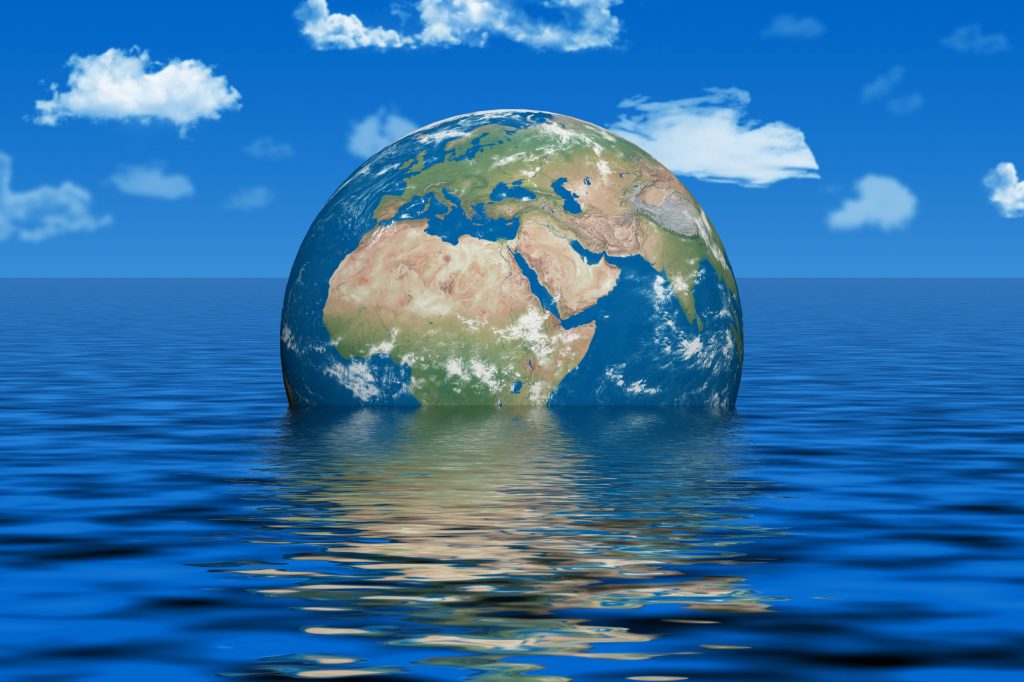How Climate Change Relates to Our Oceans

The ocean is the world’s primary source for survival. Covering up to 71% of the Earth’s surface, the ocean is home to up to 2 million species, produces over half of the world’s oxygen and absorbs 50 times more carbon dioxide than the atmosphere. Knowing all of this, it should come to no surprise that it also directly relates to climate change. The relationship between the climate and the ocean is a two way street: what affects the ocean, affects the climate, and vice versa.
Role of Oceans in Climate Change
Before providing examples of how the ocean has been affected by climate change, it’s important to understand the relationship between the ocean and the climate in the first place.
- The ocean absorbs sun radiation and helps distribute it across the globe. Once the radiation is absorbed, the ocean releases it into the air by evaporating, which increases the temperature of the air and forms rain.
- Ocean currents create weather patterns by transporting warm water from the equator to the poles and cold water from the poles back to the equator. With this transportation, the ocean is regulating the Earth’s climate, making the Earth livable in areas with more extreme heat or lack thereof.
- The ocean absorbs 50 times more carbon dioxide than the atmosphere, which affects the temperature of the water.
Ocean Climate Change Facts
Understanding the direct relationship between the ocean and climate is crucial, as it makes it easier to grasp the reasons why when the ocean is being affected, the climate is as well, and vice versa. It is a fact that the climate is changing because humans are burning fossil fuels, cutting down rainforests and farming livestock, which emits more greenhouse emissions into the air (i.e. carbon dioxide). Since the ocean absorbs so much carbon dioxide, it is being affected in the following ways:
- Ocean warming. Since the ocean is absorbing so much greenhouse emissions, it is causing the water to warm up.
- Water levels are rising. Since the water is getting warmer, in turn the climate is getting warmer, which is melting the ice caps and causing water levels to rise.
- Ocean acidification. The excessive carbon dioxide that is being absorbed into the ocean is turning it more acidic.
Climate Change Indicators
As a result of greenhouse emissions being released, the ocean levels are rising and the ocean itself is getting warmer and more acidic. A few of the main indicators are the following:
- Coral reef bleaching. As the waters get warmer, corals have been expelling algae, which has been causing it to turn white and die out. In addition, the coral reef, which is home to a multitude of organisms, depends on the formation of calcium carbonate to build their structure. Since the water is getting more acidic, it is unable to create that formation, thus decreasing the size of coral reefs.
- Fish migration patterns. As a result of the water warming, fish have changed their migration patterns, which affects fisheries that depend on it for consumption and sale, as well as animals that depend on those fish for survival.
- Drowning wetlands. The rising sea levels are drowning out wetlands that can no longer keep their blades above water. In addition, coral reefs are also in danger of drowning out since they can only photosynthesize in shallow waters.
Potential Solutions
To be blunt, climate change is happening as a result of human beings. On the upside, since we know this, there are potential solutions to the problem.
- Avoid plastic. Plastic emits greenhouse emissions into the air, so opting for paper or glass instead is a small way to cut down on emissions.
- Forest management. We want to keep forests full and thriving since the plants absorb carbon dioxide, which helps out our oceans. However, without management, trees can get dried out, which causes fires, which in turn releases those toxins into the air which are absorbed by the ocean. By maintaining them, we are able to keep our forests healthy.
- Reduce your carbon footprint. Gas is one of the greenhouse emissions. Two examples of reducing your carbon footprint is riding your bike or driving an electric vehicle.
